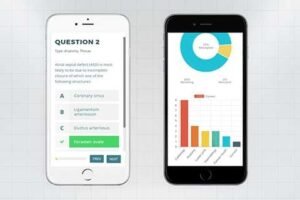According to WHO, there is currently a global shortage of more than 7 million health workers, which could rise to nearly 13 million by 2035. Growing populations and access to medical education are just two factors creating the global shortage of healthcare workers compounded by natural disasters and health crises.
Health workers are inequitably distributed throughout the world, with severe imbalances between developed and developing countries. Even within countries, there is a lack of adequate staff in rural areas compared to urban areas. Sub-Saharan Africa faces the greatest challenges. While it has 11 percent of the world’s population and 24 percent of the global burden of disease, it has only 3 percent of the world’s health workers.
Sudden catastrophic events can quickly overwhelm local and national health systems already suffering from staff shortages or lack of funds. When the Ebola epidemic struck West Africa in 2014, the outbreak led to the death of 221 health care workers in Sierra Leone, further complicating already challenging health problems for women and children. With the current COVID 19 pandemic, healthcare workers on the front lines have been exposed and many have lost their lives. At least 90,000 healthcare workers worldwide are believed to have been infected with COVID-191.
Distribution of health workers by the level of health expenditure and burden of diseases, for WHO regions. (The size of dots is proportional to health expenditure)
Add to this the rising incidence of non-communicable diseases (NCDs) and the growing geriatric population – will generate a demand for 40 million additional health workers globally by 2030. This would require doubling our current global health workforce.
Health systems designed around hospitals and clinics need to shift focus towards preventive care and encourage a holistic health approach encompassing all socio-economic determinants of health. This will help avoid unnecessary in-patient and emergency room visits and result in better health outcomes for the community at large.
Other challenges facing the healthcare workforce include gender inequality, poor distribution of skills, and inadequate training and recruitment. According to the WHO, globally only 30% of doctors are females and more than 70% of nurses are females2. A balanced healthcare workforce that addresses the issue of gender inequity and ensures equal pay for work of equal value, a favorable working environment, and targets investments towards training the female workforce is needed now more than ever.
As per an OECD global survey, 79% of nurses and 76% of doctors were found to be performing tasks for which they were over-qualified3. Given the global evidence for the poor distribution of skills, we must rationally re-organize our workforce for effective management of high-burden diseases.
The development of strong frameworks to oversee medical education, health employment and migration of health workers can bridge this global shortage of healthcare workers. Concrete efforts are required in sectors such as recruitment, development, training, and retention of the health workforce in developing countries to make sure that the workforce is directly proportional to the population.
References
- Reuters. Over 90,000 health workers infected with COVID-19 worldwide: nurses group 2020 [updated 6 May, 2020.
- Organization WH. Global strategy on human resources for health: workforce 2030. 2016
- Britnell M. Human: solving the global workforce crisis in healthcare: Oxford University Press 2019.


